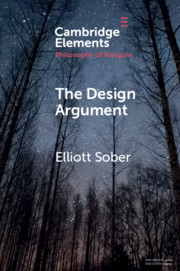Element contents
The Design Argument
Published online by Cambridge University Press: 07 December 2018
Summary
- Type
- Element
- Information
- Online ISBN: 9781108558068Publisher: Cambridge University PressPrint publication: 29 November 2018
References
- 6
- Cited by



